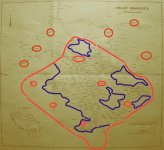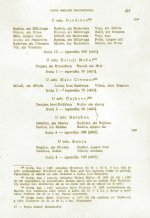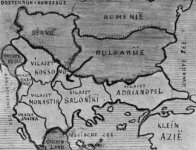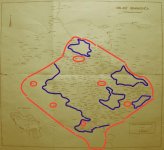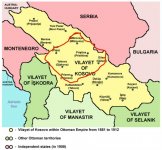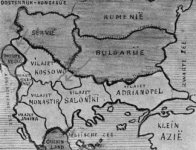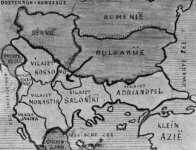When I first tried to answer this question in 2009, before the first ancient Y-DNA test was performed, I thought that all Neolithic cultures in Europe would be a blend of G2a, E1b1b, J1 and T. But Cucuteni-Tripolye was different as it clearly had a stronger Mesolithic European influence, which is why I stated from the beginning that I2 would be a major haplogroup, if not the dominant one of this culture. As for the Near Eastern haplogroups, it has since transpired that G2a was the main lineage of Near Eastern Neolithic farmers. But I am still convinced that E1b1b, J1 and T1a were also present among Neolithic farmers.
The only thing that changed in my views is that I now believe that E-M78, and more specifically E-V13, arrived in Mediterranean Europe in the late glacial period or during the Mesolithic, crossing directly from North Africa. That implies that E-M78 was found in Neolithic Europe, but as assimilated hunter-gatherers like haplogroups C1a2, F and I. The reason that E1b1b was only found in Neolithic Spain so far is that it was really confined to Mediterranean Europe at least until the Bell Beaker expansion from Iberia to western Europe. E-V13 would have expanded from Italy and Greece to the Balkans only during the Copper or Early Bronze Age, perhaps after a few lineages were assimilated by the Indo-European invaders. Therefore I doubt that E-V13 was already present in Romania, Moldova and Ukraine during the Neolithic period.
As for R1a and R1b, this is more difficult. There surely could be some of them in the eastern Cucuteni-Tripillian, especially in the later phase when they started advancing into the Pontic steppe, due to the proximity and possible intermingling with Yamna people. But I seriously doubt that they would more than occasional trace lineages. The way I see it is that the Corded Ware expansion, which started in the northern forest-steppe zone of the Yamna horizon, absorbed the remnant of the Cucuteni-Tripillian culture. So as soon as R1a and R1b Corded Ware people moved en masse to western Ukraine, the Cucuteni-Tripillian culture collapsed.
One possible alternative scenario is that the Cucuteni-Tripillian culture was really an almost purely R1a or R1b culture. This is very unlikely based on archaeological evidence, but we could imagine two possible scenarios in which the Cucuteni-Tripillian is one of the cradles of Proto-Indo-European people :
1) In the first one, Cucuteni-Tripillians are essentially R1a people who adopted agriculture upon contact with the Balkanic G2a neighbours. When they moved into the steppe from 3500 BCE, they encountered R1b Yamna people and the merger created the Corded Ware.
2) The Cucuteni-Tripillians were actually R1b-L51 people related to Yamna R1b-Z2103 people. In this most unlikely scenario, the Proto-Italo-Celtic and Proto-Germanic speakers descend from the Cucuteni-Tripillian instead of the Yamna people, while Yamna spawned only the Greek, Albanian, Armenia, Anatolian and Tocharians branches of IE languages.
In conclusion, I think that the most likely possibility is that the Cucuteni-Tripillian culture will be predominantly I2 (over 50% of the lineages, and probably lots of I2a1b-M423 among them), followed by G2a (20-30%), while other haplogroups (C1a2, F, I*, I1, J1, T1a) fill up what's left.


